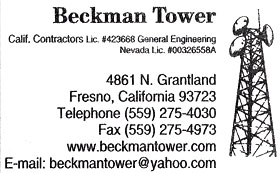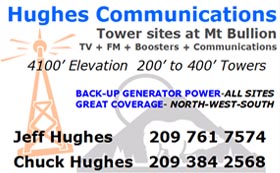The Federal Emergency Management Agency, in coordination with the FCC, will be conducting a nationwide test of the Emergency Alert System (EAS) on August 7, 2019, at 2:20 p.m. EDT.
If conditions on the day of the test require the rescheduling of the test, a secondary test date is scheduled for Wednesday, August 21, 2019. All broadcast and cable operators are required to receive and retransmit this test.
The ETRS site is online and available now at the FCC site:
https://www.fcc.gov/general/eas-test-reporting-system.
It can also be reach by going to fcc.gov and clicking on ETRS under the licensing and database tab.
Broadcasters who may not have met the July 3 deadline for filing their ETRS Form One for the upcoming nationwide emergency alert system test are still able to file as the FCC has extended the filing deadline to August 5.
Form One boils down to the FCC asking that you check to see the contact person information is up to date. Yes, there is more information on Form One, but it should pre-populate for you, and you can simply check it and, if no changes, file it. If you are a new contact person, just change the Name/Number and file it!
On or before 11:59 p.m. EDT, Aug. 7, 2019, EAS participants must file “day of test” information sought by ETRS Form Two. On or before Sept. 23, 2019, EAS participants must file the detailed post-test data sought by ETRS Form Three. ETRS Forms Two and Three will become available in the ETRS at the time of initiation of the 2019 nationwide test.
Here is more information from the BDR Website concerning the 2019 National EAS Test
This year’s test in designed to test the legacy daisy-chain system, from the PEP (Primary Entry Point) t0 the LP (Local Primary) to the individual stations that pass the test on to others. The IPAWS/CAP system will not be involved in this test.
The purpose of the test is to both focus on the station-to-station chain, to see if every station in the country gets the test.
- recognize the “national geo code” 000000
2. Respond to the new NPT (National Periodic Test) code
3. As with the EAS, the FEMA and the FCC desire stations relay “immediately.”
Additionally, stations must have a copy of the new EAS Handbook at the operating position.
THE ETRS (EAS Test Reporting System) AND REPORTING
- The initial FCC ETRS page is here.
2. All EAS Participants are required to register with ETRS and were supposed to
complete the filing of Form One on or before August 5, 2019.
(Not have your Form One done? Do it now anyway. The FCC just wants it done!)
3. The “day of test” information sought by ETRS Form Two
must be filed at or before 11:59 PM EDT on August 7th, 2019. Go here.
4. The detailed post-test data ETRS Form Three must be filed on or before September 23, 2019.
FORM ONE QUESTIONS:
- The form must be submitted as soon as possible.
- The Form One should self-populate information. The FCC wants you to confirmit is
correct and the contact person information is current. - A guide to answering many of your questions is at “Meet the ETRS”Check the Videos.
More information is here. - The FCC has a special crew at etrs@fcc.gov to answer any questions you have.
FORM TWO QUESTIONS:
This form is designed to simply have stations answer- by midnight EDT of the test day:
1. if they received the NPT and
2. did they relay it.
There is a batch file option, should you be reporting for multiple stations. Need help? etrs@fcc.gov
FORM THREE QUESTIONS:
The FCC will ask more detailed questions, requiring more time to answer, but provided 45 days
to do so. The form continues to undergo some changes, but we understand stations will be asked
to provide information as to:
1. Was the NPT received?
2. the source from which they received the NPT
3. The time and date of the receipt of the NPT
4. which time zone they are in
5. Were there are complications in receiving the NPT, and
6. provide any explanation necessary to help the FCC understand any of the answers.
7. Did the station retransmit the NPT?
8. Retransmission date and time.
9. Any complications in retransmission?
10. Any necessary explanations and comments.
QUESTIONS AND ANSWERS
- How can I tell if my EAS box is “ready” for the NPT in August?
A. If you have not recently updated your firmware, you should contact your manufacturer and
ensure you have the right version. DASDEC is V3.1 or 4.0, Sage is V89-34,
Trilithic is V18.10.05 – Gorman-Redlich is V9.9.5 or V20.9.7 - What if my manufacturer is out of business?
A. The demise of TFT (and previous companies’ EAS products) have left many questions.
Perhaps the easiest answer is: if you cannot reach the manufacturer, your
system is obsolete and needs replacing. this includes TFT, HollyAnne, and Burk. - Hey! What is this “immediate” business? Do I comply?
A. The FCC still has not officially been very clear. They did change section 11.54 to make the NPT
the functional equivalent of the EAN. Most manufacturers now break into programming as
soon as the headers are received. - OK, so I will upgrade. Why does this cost me?
A. The upgrades mandated by the FCC (to switch “immediately,” new codes, etc.) and
the FEMA (TLS and other security changes) meant significant changes were needed
in the operating code. Most manufacturers try to hold back upgrade costs, but the
accumulated changes caused this situation. Some manufacturers made the upgrade
nearly two years ago. Some others seem to have waited until the time factor got too tight. - Does that mean all upgrades cost money?
A. Not necessarily. Mostly it depends upon how complex the FCC and the FEMA changes dictate. While - The New EAS Handbook does not “fit all.” What should we do?
A. The FCC says to edit the Handbook to meet your needs and then post at the Control Point. - Will there be an issue with “invalid certificate” this year?
A. Not to worry. All EAS boxes now operating properly will be OK until November, when a new
certificate will be put in place. All EAS boxes that are up to date should accept the new
certificate without problems, according to current information. - I did not get a confirmation of my Form One submission. What should I do?
A. Go back to the ETRS and check your status fir Form One. Some had to “sign off”
then “sign back on” and submit. If you have trouble, contact etrs@fcc.gov
They will help solve the problem.


